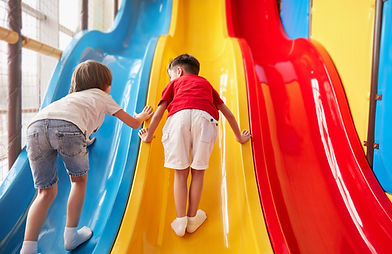


What is OT?
Occupational therapy is a health care profession that focuses on a person’s well being by analysing their occupations/activities they do each day. In our case, we specialize in children and therefore focus on their primary activities of daily living including school, play, social, self-care and sleep. Occupational therapy can assist a child that experiences functional difficulty in any of these activities of daily living. Therapy is also activity-based, ensuring that that the outcomes are not only functional but fun and motivating for the child. The approach of occupational therapy focuses on improving difficulties but also making accommodations or adaptations to the child’s tools or environments to make them as functional as possible.

Why is sensory integration important?
Sensory integration or “sensory difficulties” are beginning to be spoken about a lot more commonly in reference to behavioural and motor difficulties in the school environment. Sensory Integration is the neurological process where the brain allows us to take information in from our senses, organizes this information and interprets the sensory input from one’s own body and from the environment so that we can use the information effectively to move and interact within the environment. When difficulties are found with regards to this ability to take in, organise and interpret this sensory information a child is then reported to have sensory integration difficulties. These difficulties may present in terms of behaviours (such as sensitivity to clothing, fear of movement, highly active, potty training difficulties or poor sleep etc.) or motor difficulties (such as clumsy, poor coordination, difficulty writing etc.).
In occupational therapy, sensory integration is about understanding each child’s unique sensory profile, in terms of how they process each sensory input. It is important to understand that each person’s response to sound, vision, touch, taste, smell and processing of movement is unique and therefore getting a thorough understanding of this is essential. Should the child’s ability to process these sensory inputs result in functional difficulties occupational therapy is then recommended. These functional difficulties are not isolated to but could include: difficulty focusing and sitting still; aggressive behaviours; sensitivities to food; difficulties with self-care (hair brushing, teeth brushing, dressing) or sleeping; struggling with a change in routine or moving constantly. It can also result in difficulty completing tasks, following instructions or engaging with others. Every child’s sensory system is different and needs to be understood within their specific context.
What could you look out for if you feel your child might benefit from occupational therapy intervention?
Occupational Therapy could be considered to assist your child if they are experiencing any of the following difficulties in these specific areas:
School


Play
-
Playfulness (eagerness to play freely and lead/guide their own free play)
-
Engaging and playing with others freely
-
Following rules of structured games
-
Type of play preferences (e.g., sensorimotor, rough and tumble, pretend/ fantasy play, games with rules etc.)
-
Active engagement in and with their play space e.g. jungle gym, swings, peers etc.
-
Duration of play engagement e.g. jumping consistently between games or toys
-
Sitting and focusing in class
-
Distractibility/impulsivity
-
Maintaining their posture at the desk or on the floor
-
Starting a task, completing a task or finishing a task
-
Following instructions/demonstrations
-
Dysfunctional adaptive behaviours, e.g. biting, tapping, fidgeting, anxiety, anger, self-confidence
-
Tolerance to change
-
Pencil grips
-
Using two hands together e.g. holding ruler, cutting, tracing
-
Manipulating tools e.g. scissors, pencil (in terms of control, timing and coordination)
-
Layout and organisation of work
-
Drawing, colouring, writing e.g. details, neatness, sizing, spacing
-
Copying from the board or demonstration
-
Awareness of their bodies and space e.g. clumsiness, disorganised in space
-
Coordinating body movements e.g. on jungle gyms or in extramural activities
-
Endurance
-
Impulsivity/rushing movements
Social
-
Ability to make friends and build on friendships
-
Interactions with peers e.g. withdrawn, overbearing, playful
-
Interactions with teacher e.g. needy, clingy, disrespectful
-
Turn-taking in classroom discussions and on the playground
-
Eye contact and other non-verbal communication with others
-
Changes of the pitch of voice


Self-care
-
Eating e.g. food and smell sensitivities, coordinating tools
-
Toileting e.g. incontinence difficulties, prolonged use of nappies
-
Bathing e.g. difficulty hair washing, sensitivity to cream/sun block
-
Dressing e.g. sensitivities to clothes or socks, orientating clothing, coordination of dressing, independence, hair brushing
-
Sleeping e.g. difficulty falling asleep, regular wake-ups, arriving at school tired, irregular routines